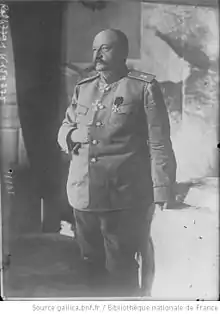Portal:European military history
.svg.png.webp)
Introduction
The military history of Europe refers to the history of warfare on the European continent. From the beginning of the modern era to the second half of the 20th century, European militaries possessed a significant technological advantage, allowing its states to pursue policies of expansionism and colonization until the Cold War period. European militaries in between the fifteenth century and the modern period were able to conquer or subjugate almost every other nation in the world. Since the end of the Cold War, the European security environment has been characterized by structural dominance of the United States through its NATO commitments to the defense of Europe, as European states have sought to reap the 'peace dividend' occasioned by the end of the Cold War and reduce defense expenditures. European militaries now mostly undertake power projection missions outside the European continent. Recent military conflicts involving European nations include the 2001 War in Afghanistan, the 2003 War in Iraq, the 2011 NATO Campaign in Libya, and various other engagements in the Balkan and on the African continent. After 2014, the Russian annexation of Crimea and the ongoing Russo-Ukrainian War prompted renewed scholarly interest into European military affairs. For further the context see History of Europe . (Full article...)
Selected article

Selected battle

Did you know
- ... that the German dreadnought battleship SMS Baden was the only capital ship not successfully sunk in the scuttling of the German fleet in Scapa Flow in 1919?
- ... that Nikephoros II Orsini was killed during the Battle of Achelous and his whole army was destroyed by Albanian forces, marking the end of the Orsini dynasty in the Despotate of Epirus?
- ... that Swiss born peasant-farmer Pierre Nicholas Dorsaz led Napoleon and his army of over 60,000 men, cavalry and artillery through the Alps to Italy in 1800 as part of a plan to surprise the Austrians there?
- ... that during the Siege of Paris, French inventor and photographer René Dagron used carrier pigeons carrying microfilms to send messages across German lines?
European military history topics
Selected biography

Selected picture

General images -
Related WikiProjects
| Military history | European Union | Europe |
 |
 |
Subcategories
Related portals
Associated Wikimedia
The following Wikimedia Foundation sister projects provide more on this subject:
-
 Commons
Commons
Free media repository -
 Wikibooks
Wikibooks
Free textbooks and manuals -
 Wikidata
Wikidata
Free knowledge base -
 Wikinews
Wikinews
Free-content news -
 Wikiquote
Wikiquote
Collection of quotations -
 Wikisource
Wikisource
Free-content library -
 Wikiversity
Wikiversity
Free learning tools -
 Wiktionary
Wiktionary
Dictionary and thesaurus
-
 List of all portalsList of all portals
List of all portalsList of all portals -
 The arts portal
The arts portal -
 Biography portal
Biography portal -
 Current events portal
Current events portal -
 Geography portal
Geography portal -
 History portal
History portal -
 Mathematics portal
Mathematics portal -
 Science portal
Science portal -
 Society portal
Society portal -
 Technology portal
Technology portal -
 Random portalRandom portal
Random portalRandom portal -
 WikiProject PortalsWikiProject Portals
WikiProject PortalsWikiProject Portals








.png.webp)
.jpg.webp)
.png.webp)









_-_Royal_Collection.jpg.webp)













.svg.png.webp)
















.JPG.webp)




.jpg.webp)








.JPG.webp)









_001.jpg.webp)









.jpg.webp)










.jpg.webp)


